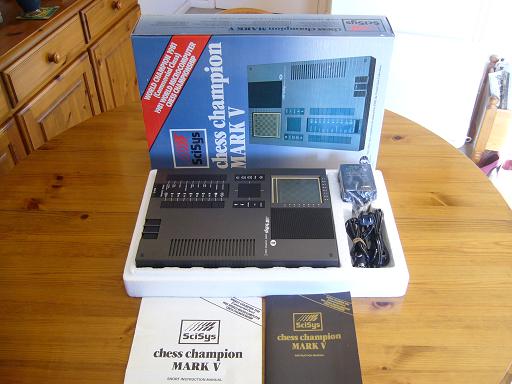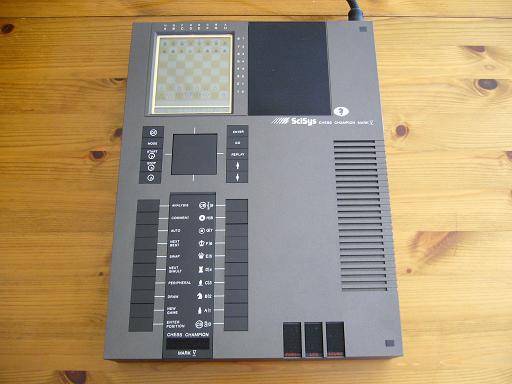|
The Chess Champion Mark V shot to fame when it won the World Microcomputer Chess Championship (Commercial Class) at Travemunde, West Germany held on 21st - 27th September 1981. It was up against a Fidelity Champion Sensory Chess Challenger, a Novag Savant and a Great Game Machine with Grunfeld / Morphy / Capablanca modules. It scored 8.5 / 12 although it lost 1.5 / 2.5 to the Fidelity. The games, including the crucial win by Mark V over the Fidelity in the last round, can be found here (link).
The strength of play assumed from this win allied to a striking design and many new features made it a must have machine for the chess computer enthusiast. Amongst the great and the good who had a Mark V were former Prime Minister James Callaghan, World Snooker Champion Steve Davis, TV presenter Anna Ford, and actor Anthony Valentine (Colditz, Callan).
The Mark V was regarded as cutting edge technology at a comparatively reasonable price. The cost was £280, compared with a GGM + Morphy at £295 and a Fidelity Champion Sensory at £330.
|

